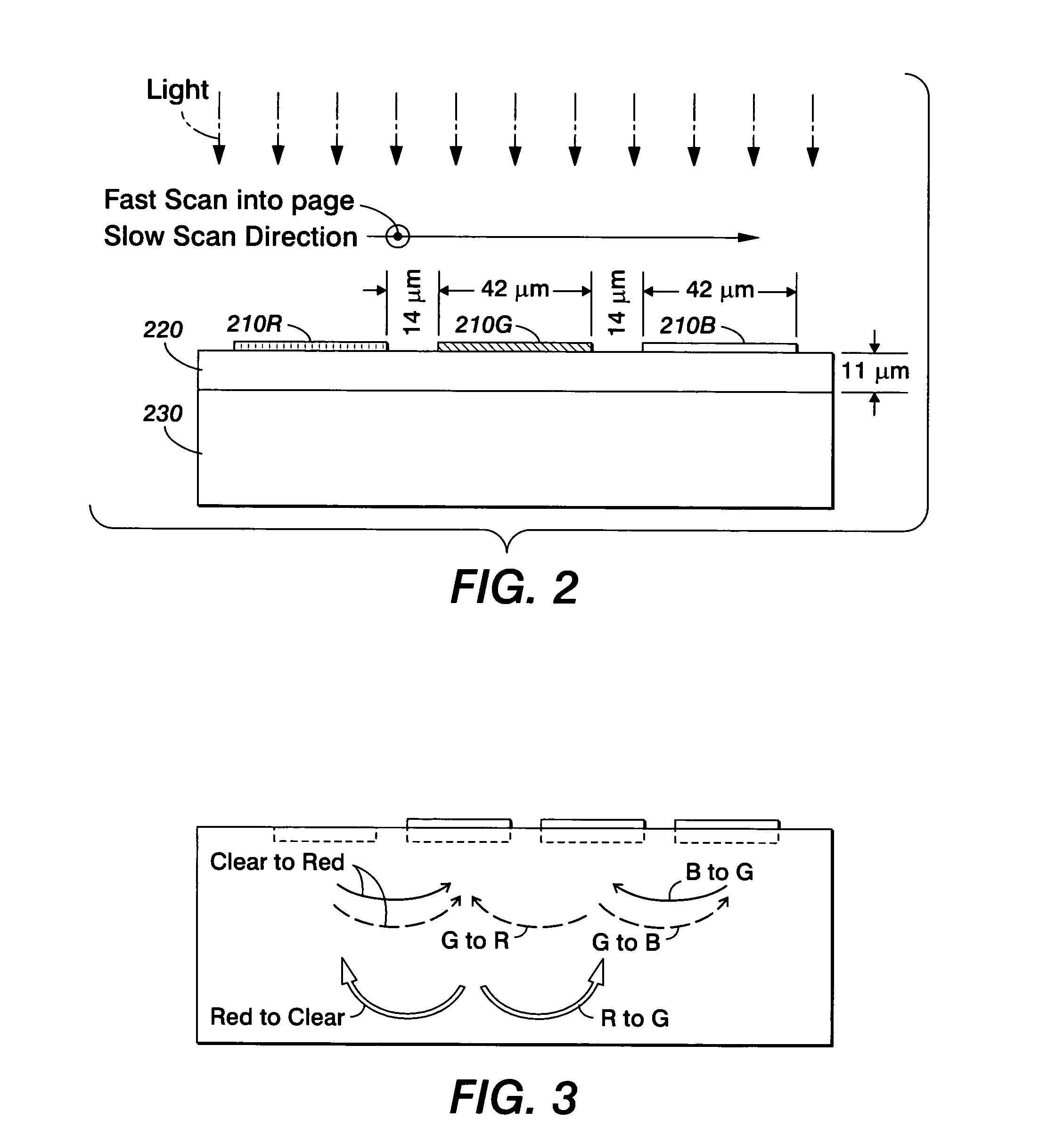Method for correcting scanner non-uniformity
a technology of non-uniformity and scanner, which is applied in the field of correcting non-uniformity defects in printed images, can solve the problems of non-uniform appearance, difficult and expensive manufacturing of strips with reflectance variation of 0.1% or less, and the quality of calibration is only as good as the uniformity, so as to reduce the variability, reduce the cost of manufacturing, and reduce the effect of cos
- Summary
- Abstract
- Description
- Claims
- Application Information
AI Technical Summary
Benefits of technology
Problems solved by technology
Method used
Image
Examples
Embodiment Construction
[0023]In the following detailed description, reference is made to the accompanying drawings, which form a part hereof, and in which is shown by way of illustration specific illustrative embodiments in which the invention may be practiced. These embodiments are described in sufficient detail to enable those skilled in the art to practice the invention, and it is to be understood that other embodiments may be utilized and that logical, mechanical and electrical changes may be made without departing from the scope of the disclosure. The following detailed description is, therefore, not to be taken in a limiting sense.
[0024]The method of correcting for scanner non-uniformity as described herein uses approximately uniform pages and the scanner itself to characterize their non-uniformity rather than assuming perfect uniformity of the test pages. The pages are scanned in multiple orientations and translations, each, so that any within-page non-uniformity may be separated from scanner non-u...
PUM
| Property | Measurement | Unit |
|---|---|---|
| reflectance | aaaaa | aaaaa |
| reflectance | aaaaa | aaaaa |
| color | aaaaa | aaaaa |
Abstract
Description
Claims
Application Information
 Login to View More
Login to View More - R&D
- Intellectual Property
- Life Sciences
- Materials
- Tech Scout
- Unparalleled Data Quality
- Higher Quality Content
- 60% Fewer Hallucinations
Browse by: Latest US Patents, China's latest patents, Technical Efficacy Thesaurus, Application Domain, Technology Topic, Popular Technical Reports.
© 2025 PatSnap. All rights reserved.Legal|Privacy policy|Modern Slavery Act Transparency Statement|Sitemap|About US| Contact US: help@patsnap.com



